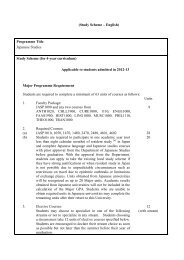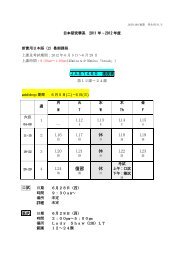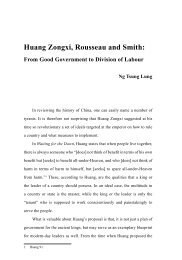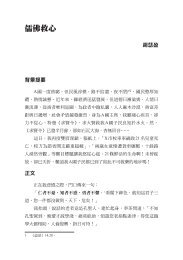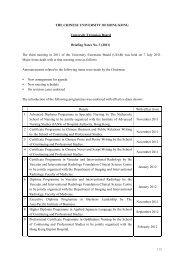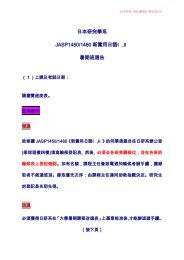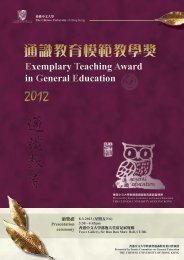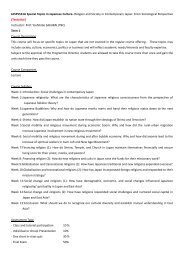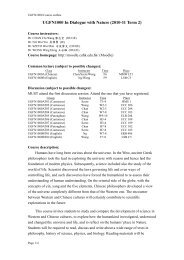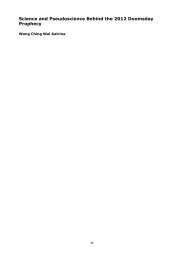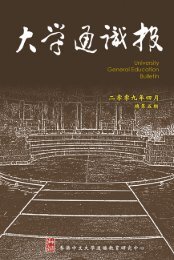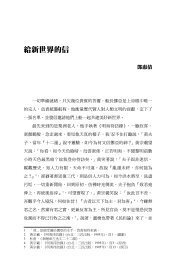ä¸è¼å ¨æ¸ - The Chinese University of Hong Kong
ä¸è¼å ¨æ¸ - The Chinese University of Hong Kong
ä¸è¼å ¨æ¸ - The Chinese University of Hong Kong
Create successful ePaper yourself
Turn your PDF publications into a flip-book with our unique Google optimized e-Paper software.
Wyman Kwok, Education and Thinking 215<br />
from course to course, from student to student, and from subject to subject.<br />
Because <strong>of</strong> this, CT educators would like to develop more effective ways<br />
to better achieve that purpose. Here, I introduce some relevant issues and<br />
studies on the subject, with the hope <strong>of</strong> arousing awareness and interest<br />
among teachers in promoting CT education in their own subjects.<br />
How subject-specific is CT 11 Is CT in psychology similar to CT in<br />
physiology What about physics and phonetics In view <strong>of</strong> the very diverse<br />
nature <strong>of</strong> different subjects, one may be or should be skeptical about any<br />
general attempts to analyze the notion “CT in X” for any subject X. At the<br />
same time, fruitful attempts <strong>of</strong> this kind can give us valuable insights on the<br />
teaching <strong>of</strong> CT in a specific subject. <strong>The</strong>re are works <strong>of</strong> this kind. Here, I<br />
examine the work <strong>of</strong> Nosich (2005), Learning to think things through: A guide<br />
to critical thinking across the curriculum. <strong>The</strong> titles <strong>of</strong> several exemplary<br />
chapters or sections hint at the book’s character: “<strong>The</strong> Parts <strong>of</strong> Critical<br />
Thinking within a Field,” “Thinking Biologically, Thinking Sociologically,<br />
Thinking Philosophically, Thinking Musically . . . ,” “<strong>The</strong> Logic <strong>of</strong> the Field<br />
or Discipline,” “Impediments to Thinking Critically within a Discipline,” and<br />
so on.<br />
In brief, the book uses the following framework. It identifies a “core<br />
process <strong>of</strong> CT in a discipline,” which may be characterized by this sentence: To<br />
think through a question, using the elements, with the standards in mind, and<br />
in terms <strong>of</strong> the discipline. “Elements” here means “elements <strong>of</strong> reasoning.”<br />
<strong>The</strong> idea is that “[u]ltimately, we can display the logic <strong>of</strong> a field by analyzing<br />
it in terms <strong>of</strong> the elements <strong>of</strong> reasoning” (Nosich, 2005, p. 98; former italics<br />
11 See Ennis (1989) and McPeck (1990) for some clarification and discussion on the notion <strong>of</strong><br />
subject specificity in the context <strong>of</strong> CT.



